What’s the best way to anchor pallet racks
Anchoring pallet racking is a process that everyone who uses pallet racking, and any warehouse racking, goes through.
You can choose to install it yourself or you can choose to hire a professional team to do it, but I think you should all need to know some specialized knowledge about anchored pallet racking because when you know this, you can better know if your pallet racking is anchored successfully!
So let’s explore the steps of anchoring pallet racking next!
- Select Suitable Anchor Points:
Determine the locations where the pallet rack uprights will be anchored to the floor. Anchor points are typically pre-drilled holes in the baseplates of the upright frames. - Prepare the Floor:
Clear the installation area of any debris, dust, or obstructions.
Ensure the concrete floor is level and clean where the anchor points will be located. - Mark Anchor Hole Locations:
Use chalk or markers to mark the positions on the concrete floor where the anchor holes will be drilled. These positions should align with the anchor points on the baseplates of the rack uprights. - Drill Anchor Holes:
Use a hammer drill equipped with a masonry drill bit that matches the size of the anchor bolts provided by the rack manufacturer. Drill holes into the concrete floor at the marked locations to the depth specified by the rack manufacturer or according to local building codes. - Insert Anchor Bolts:
Clean the drilled holes of any dust or debris using a brush or compressed air.Insert anchor bolts into the drilled holes. Ensure that the bolts are aligned vertically and securely seated in the holes. - Secure Anchor Bolts:
Place the baseplates of the rack uprights over the anchor bolts.Insert washers and nuts onto the threaded ends of the anchor bolts. Use a wrench or socket wrench to tighten the nuts securely, ensuring that the baseplates are firmly pressed against the concrete floor. - Check and Adjust: Verify that the rack uprights are level and plumb using a spirit level. Adjust the tightness of the anchor bolts as needed to ensure proper alignment and stability.
- Repeat for Each Upright:
Repeat the anchoring process for each upright frame of the pallet rack system, ensuring that all anchor points are securely fastened to the concrete floor. - Inspect and Test:
Conduct a visual inspection of the anchored pallet racks to ensure that all bolts are properly tightened and secure. Perform a load test by gradually adding weight to the racks to verify their stability and load-bearing capacity. - Document Installation:
Keep detailed records of the pallet rack installation, including the locations of anchor points, bolt sizes, and torque specifications used.
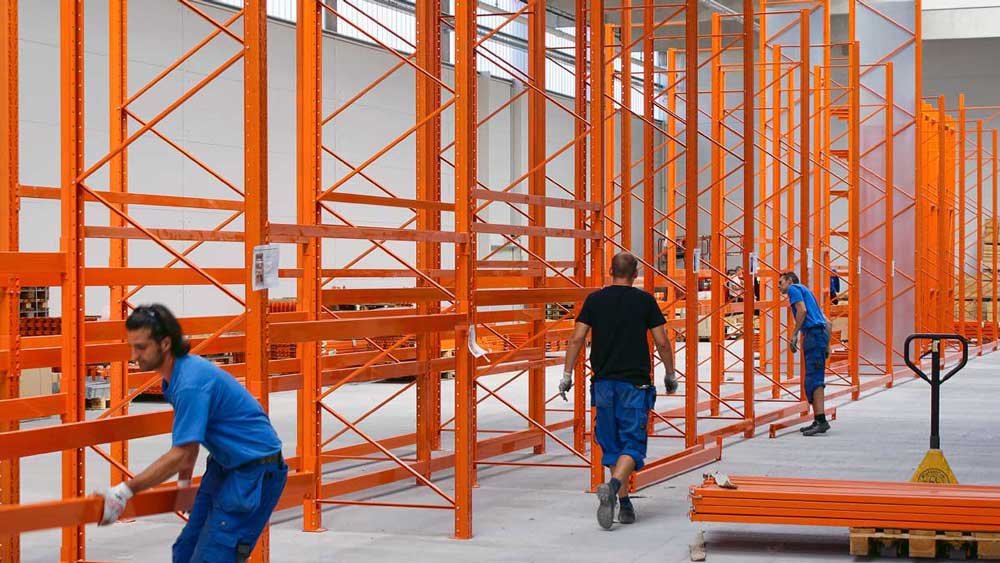
Some key points to realize before anchoring pallet racking
Types and selection of bolts
When anchoring pallet racking to concrete floors, it’s essential to choose the right type of bolts to ensure stability and safety. Here are some common types of bolts used for anchoring pallet racking, along with considerations for their selection:
Wedge Anchor Bolts:
Wedge anchor bolts are similar to expansion anchor bolts but use a wedge-shaped expansion mechanism instead of a sleeve. These bolts provide high pull-out resistance and are suitable for heavy-duty applications like pallet racking. Wedge anchor bolts are available in different lengths and diameters to accommodate various concrete thicknesses and load requirements.
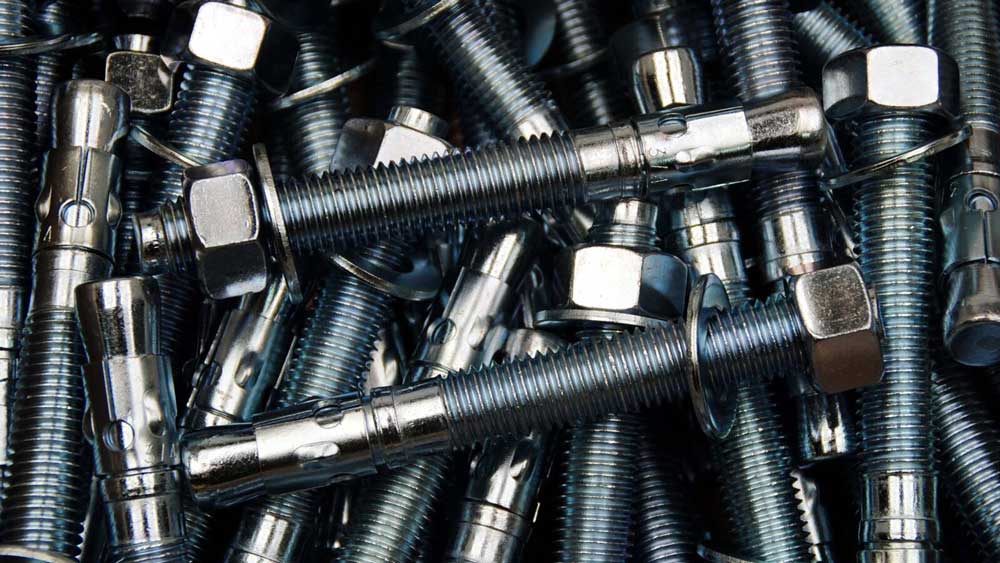
Drop-In Anchor Bolts:
Drop-in anchor bolts consist of a threaded anchor body and a separate expansion plug. These bolts are installed by first inserting the anchor body into a pre-drilled hole in the concrete and then setting the expansion plug in place by tapping it with a hammer. Drop-in anchor bolts are suitable for medium-duty applications and offer a flush finish when not in use.
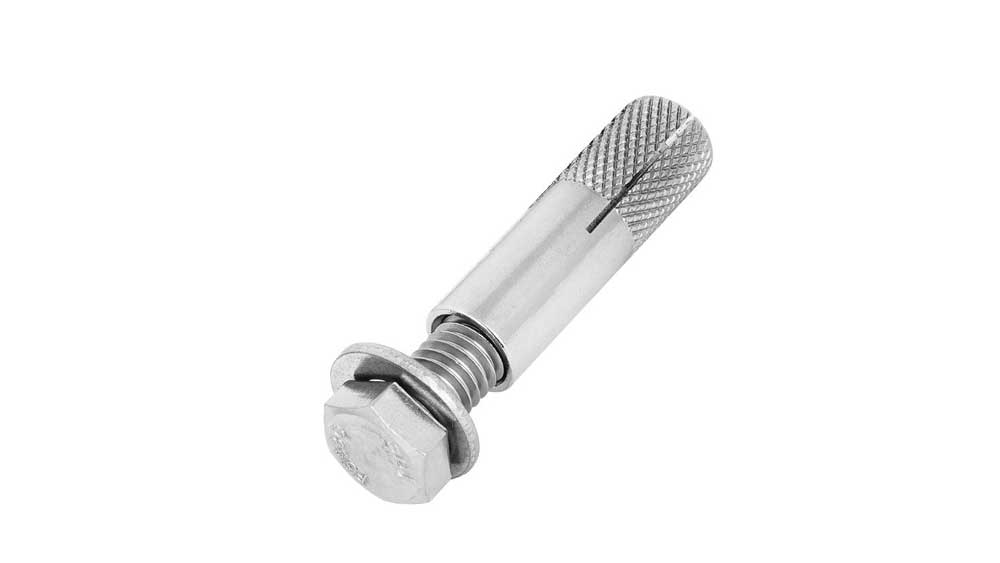
Sleeve Anchor Bolts:
Sleeve anchor bolts feature a cylindrical sleeve that expands when the bolt is tightened, providing a secure hold in concrete. These bolts are easy to install and offer good pull-out resistance. Sleeve anchor bolts are available in various lengths and diameters to accommodate different load requirements.

Chemical Anchor Bolts:
Chemical anchor bolts are bonded to the concrete using a special adhesive, providing a strong and permanent connection. These bolts are suitable for applications where traditional mechanical anchors may not be feasible, such as overhead installations or highly corrosive environments. Chemical anchor bolts are available in different formulations to suit various concrete and load conditions.
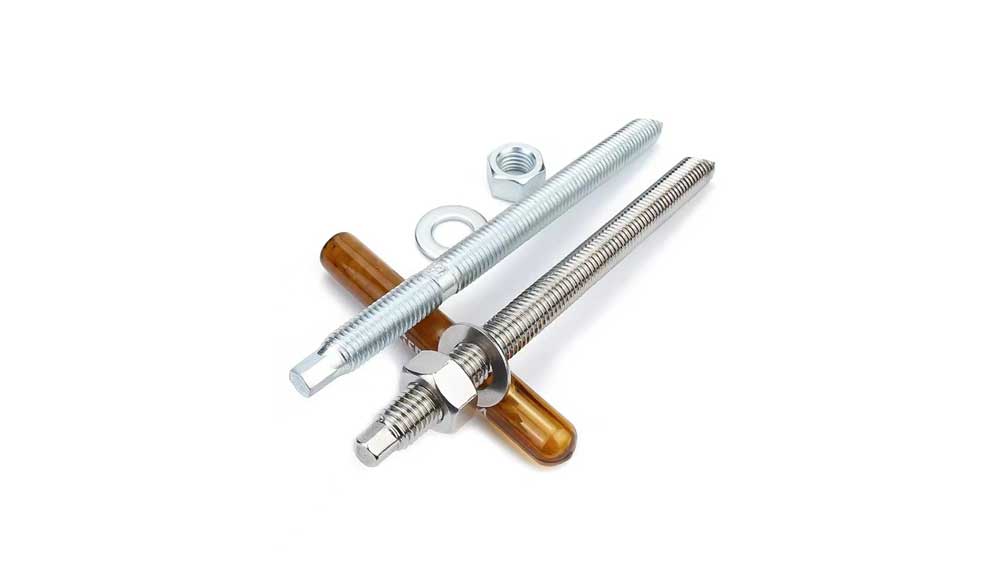
Typically, wedge anchors have been used in most of HEDA’s past cases. This is because wedge anchors are designed to be very useful for anchoring pallet racking. When a wedge anchor is loosened by an external force (but the anchor is still halfway in the hole), you can screw the wedge back in, but you need to tighten it to the specified torque.
In practice, however, we hope that you will take into account the following factors in selecting the right anchor for your application.
- Load Capacity: Choose bolts with sufficient load capacity to support the weight of the pallet racking and stored goods.
- Concrete Strength: Consider the type and strength of the concrete to determine the appropriate bolt type and size.
- Installation Method: Select bolts that are compatible with the installation method and equipment available on-site.
- Environmental Conditions: Consider factors such as moisture, temperature, and corrosion resistance when choosing bolt materials and coatings.
Pallet Rack Foot Plates
The foot plates of a pallet rack are structural components typically found at the base of each upright frame. They serve as the points of contact between the rack and the floor, providing stability and load distribution.
Foot plates are usually made of steel and are designed to bear the weight of the rack and its contents, distributing the load evenly across the floor surface to prevent sinking or damage.
Proper installation and anchoring of foot plates are essential for the safe and stable operation of pallet racks, particularly in environments where heavy loads are stored.
Additionally, foot plates often have holes or slots for anchoring bolts, which are used to secure the rack to the floor for added stability and safety.
So when we are shopping for pallet racking, what should we follow for pallet rack foot plates to determine if they are good enough? Then the following four points I think can help you!
- Heavy-Duty Construction: Foot plates made of thick, durable steel are typically preferred for their strength and longevity. They should be capable of supporting the weight of the rack and its maximum load capacity without bending or deforming.
- Large Surface Area: Foot plates with a larger surface area distribute the weight of the rack over a wider area of the floor, reducing the risk of damage or indentation, especially on softer surfaces.
- Reinforced Design: Some foot plates have reinforced edges or ribs to enhance their structural integrity and load-bearing capacity. This reinforcement helps prevent bending or warping under heavy loads.
- Corrosion Resistance: Foot plates that are treated with corrosion-resistant coatings or made from materials like stainless steel are ideal for environments where moisture or chemical exposure is a concern, such as warehouses with high humidity or corrosive substances.
If the foot pedal can be of excellent standard in these four points, then this pallet rack foot pedal is bound to be worth your purchase and use.
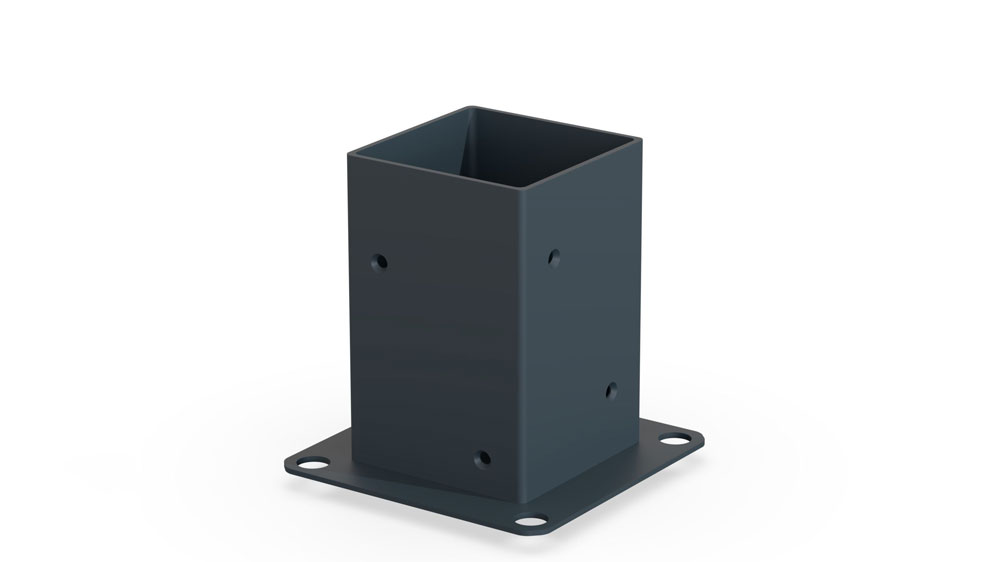
Embedding Depth of Bolts
The embedded depth of wedge bolts, also known as anchor bolts or expansion bolts, depends on several factors including the type and thickness of the floor material, the load capacity requirements, and the specific manufacturer’s recommendations. However, a common guideline for determining the embedded depth of wedge bolts is to ensure that they penetrate the concrete floor deep enough to provide sufficient anchorage strength and prevent pullout or failure.
As a general rule of thumb, wedge bolts should be embedded into the concrete floor to a depth of at least four times the diameter of the bolt. For example, if you are using a 1/2-inch diameter wedge bolt, it should be embedded into the concrete to a depth of at least 2 inches (1/2 inch bolt diameter x 4).
However, it’s important to note that this guideline may vary based on specific engineering calculations, local building codes, and the manufacturer’s recommendations. It’s always best to consult with a structural engineer or the manufacturer of the wedge bolts to determine the appropriate embedded depth for your particular application to ensure proper anchorage and structural integrity. Additionally, factors such as the quality of the concrete and any potential deterioration over time should also be taken into consideration when determining the embedded depth of wedge bolts.

Anchor Spacing
The anchor point spacing when anchoring pallet racking is an important consideration for ensuring the stability and safety of the racking system. Anchor points are typically where bolts or other fasteners secure the rack uprights to the concrete floor. The spacing of these anchor points depends on several factors, including the design of the racking system, the weight and distribution of the loads being stored, and local building codes or regulations.
As a general guideline, anchor points for pallet racking systems are often spaced evenly along the base of each upright frame. Common anchor point spacings range from 3 to 6 feet (approximately 0.9 to 1.8 meters) apart horizontally along the base of the uprights. However, it’s crucial to consult the manufacturer’s specifications and engineering guidelines for the specific racking system being installed, as they may provide recommendations for anchor point spacing based on the system’s design and load capacity.
Additionally, local building codes or regulations may also dictate minimum requirements for anchor point spacing or provide guidelines for proper anchorage of pallet racking systems. It’s essential to adhere to these regulations to ensure compliance and the safety of the installation.
Factors such as seismic activity, wind loads, and other environmental considerations may also influence anchor point spacing requirements. In regions prone to earthquakes or high winds, for example, tighter anchor point spacing or additional reinforcement may be necessary to enhance the stability of the racking system.
Ultimately, determining the appropriate anchor point spacing for pallet racking should be done in consultation with structural engineers, racking system manufacturers, and compliance with relevant building codes and regulations to ensure the safety and stability of the installation.
Conclusion
In summary, anchoring pallet racks securely is essential for warehouse safety and stability. Following a precise procedure and selecting suitable anchor bolts ensure effective installation. While wedge anchors are common, it’s crucial to consider other options based on factors like load capacity and environmental conditions.
Pallet rack foot plates play a key role in stability, with features such as heavy-duty construction and corrosion resistance being important considerations. Understanding factors like bolt embedding depth and anchor spacing further enhances installation integrity.
For reliable pallet racking solutions, HEDA, a professional shelf manufacturer from China, offers expertise and quality products tailored to diverse storage needs. Trust HEDA for efficient warehouse operations and optimized storage management.

